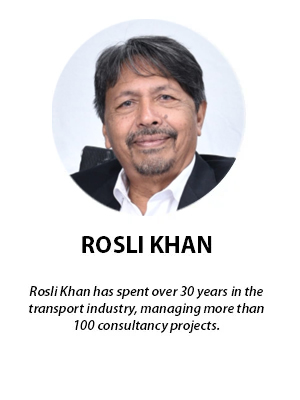
Malaysia’s southernmost city, Johor Bahru, covers an area of 373km. In contrast, the size of Singapore is 719km, and is home to approximately six million people.
That means JB city itself is half the size of Singapore.
However, the whole of Southern Johor – encompassing JB, Larkin, Senai, Kulai to the north and surrounding areas – as one urban entity, is three times the size of Singapore.
This extended region houses a population of approximately 1.5 million people, with projections indicating significant future growth.
Planning for future
Currently, the population density in JB is about 2,000 persons per square km, considerably lower than Singapore’s, which is almost 9,000 persons per square km.
Population density plays a decisive role in determining the feasibility of any mass transit system.
The recently proposed LRT for JB suggests a vast coverage area, implying high costs to construct the three lines estimated to have a span of 30km.
While existing ridership numbers might not immediately justify the substantial construction investment, it is essential to consider this plan as a preparation for future demand.
A strategic approach involves careful alignment planning, including ensuring that stations are located near potential future Transit-Oriented Development (TOD) along the proposed corridors.
To optimise resources, the initial focus should be on high-demand corridors, such as Kulai-Senai-Larkin-JB, with extensions planned for the future.
A modal shift
The plan must be cost effective, which means a phased construction approach is needed to avoid areas with thin ridership demand.
Encouraging a modal shift, from private to public transport is crucial to ensure its success.
Under normal circumstances, car users shy away from using mass transit systems. Excuses are aplenty, including claims of inconvenience, loss of car comfort, lack of door-to-door services, and connectivity issues related to “first and last mile” access.
JB must draw lessons from the Klang Valley, where despite mass transit availability, car usage remains high due to inadequate strategies to discourage private car use.
Accordingly, there is a need for a more comprehensive planning and punitive policy toward car users.
A thorough study
Before committing to a specific mass transit system, a thorough study is imperative to identify suitable corridors, forecast ridership, and estimate construction costs.
While planning for a public transport facility is commendable, it is crucial to acknowledge the range of other options available in the market, too.
Contrary to what most planners tend to believe, conventional LRT systems are expensive (due to the need for it to be elevated) and too rigid in providing service coverage.
The Autonomous Road Tram (ART) may well be a more cost-effective alternative.
Its flexibility in route variation, absence of a fixed elevated structure, and lower overall cost make it a compelling option.
Although there is no doubt that JB requires a mass transit system, the LRT may not necessarily be the best choice for the city.
On the other hand, an ART system stands as a viable alternative, contingent upon the findings of a comprehensive public transport demand study.
The views expressed are those of the writer and do not necessarily reflect those of MMKtT



No comments:
Post a Comment
Note: Only a member of this blog may post a comment.